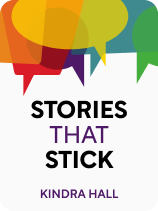

This article is an excerpt from the Shortform book guide to "Stories That Stick" by Kindra Hall. Shortform has the world's best summaries and analyses of books you should be reading.
Like this article? Sign up for a free trial here.
What is the three-act story structure? How does this structure create a memorable story that your business thrives from?
Most stories are split into three acts: the beginning, the middle, and the end. But Stories That Stick by Kindra Hall says that businesses should think of this structure as a before, the change, and the after to sell their story to customers.
Let’s look at how Hall reimagines the classic three-act story structure.
The Story Sequence for Businesses
We’re taught from an early age that good stories have a beginning, a middle, and an end. But Hall recommends reimagining this three-act story structure as a before (what she calls “the normal”), the change (“the explosion”), and the after (“the new normal”). This structure focuses on introducing tension or conflict that’s then resolved, thereby creating an engaging and more memorable story.
(Shortform note: While Hall argues that good stories need a before, a change, and an after, there are effective marketing campaigns that don’t follow this structure. For example, in Nike’s ad, “The Jogger,” a boy jogs slowly along a country road. The ad ends with the slogan, “Find Your Greatness.” This story doesn’t have any explicit change or evolution, and the beginning and the end of the story are left up to the audience’s imagination. However, despite the lack of dynamic structure, this ad has been called one of Nike’s most inspirational ads of all time.)
While often overlooked, the beginning of the story is critically important. In order to be emotionally invested in your story, your audience needs to know what the world looked like before everything changed. Your audience will be even more invested if that world, or the characters, is familiar to them. As you begin your story, introduce the characters and add the details that will help your audience connect to the world you’re describing. For example, if you’re speaking to a group of millennials, you could incorporate a reference to ’90s pop music or college debt—any detail that allows the listener to see themselves in your story.
(Shortform note: In The Storytelling Edge, the authors explain that making your story relatable will make it more effective because people prefer stories about people who look and think like them. But the authors say that in addition to relatability, stories need novelty. For example, an audience may easily relate to the teenage life of Marty McFly in the movie Back to the Future, but they wouldn’t watch an entire movie of Marty driving around in his car. The story needs the novelty of Doc’s time machine to make it engaging.)
The next part of the story is the moment when everything changes. It doesn’t matter whether the change in your story is good or bad; your story needs a moment where something happens that marks a difference between what happened before and what happens after. Otherwise, the story will be stagnant.
(Shortform note: In order to be effective, this change must be associated with some kind of conflict. Someone getting a haircut that no one notices would qualify as a change, but it wouldn’t create the kind of tension necessary to move the story forward. Conflict can be either internal or external. Internal conflict refers to the psychological struggle that takes place within a character’s mind as they grapple with conflicting emotions, beliefs, desires, or values, while external conflict is a struggle that takes place between a character and an outside force or obstacle.)
In the final part of the story, you describe what happens after the change—how does the central character or the world look different after the change, or how could it look different? For example, after someone buys your product, how is their life better?
An Alternative Story Model
In Building a Storybrand, Donald Miller introduces the StoryBrand 7-Part Framework. This is an alternative storytelling model that you can use to construct a compelling narrative for your intended audience. Miller’s model loosely follows Hall’s suggestions but includes steps at the end of the story that explicitly outline the actions the storyteller wants the audience to take. (While Miller uses the term customer, we’ll use the term audience, because the framework can also apply to stories told to investors, potential donors, and prospective or current employees.)
- Start the story by telling your audience (and protagonist) what they want and the gap that exists between them and fulfilling that want.
- Identify a problem standing in the way of your audience achieving their want that your product, service, or company will help them overcome.
- Position your brand as your audience’s guide in the story, the figure that will help them overcome obstacles and attain their desire.
- Present your audience with a step-by-step plan to overcome their problem, specifically a plan that involves investing in, purchasing, or implementing your product or service.
- Create a call to action. Ask the audience to take the first step in initiating the plan you presented.
- Explain the consequences of not taking action. Miller argues that without understanding the negative consequences of inaction, your audience won’t be compelled to take the necessary first step.
- Show the positive outcome (or happy ending) that will result from investing in or buying your product or service. Miller advises keeping this outcome as simple and specific as possible.

———End of Preview———
Like what you just read? Read the rest of the world's best book summary and analysis of Kindra Hall's "Stories That Stick" at Shortform.
Here's what you'll find in our full Stories That Stick summary:
- Why stories are probably the answer to most of your business problems
- How to harness the power of storytelling to connect with your audience
- How to integrate storytelling into your marketing strategy






